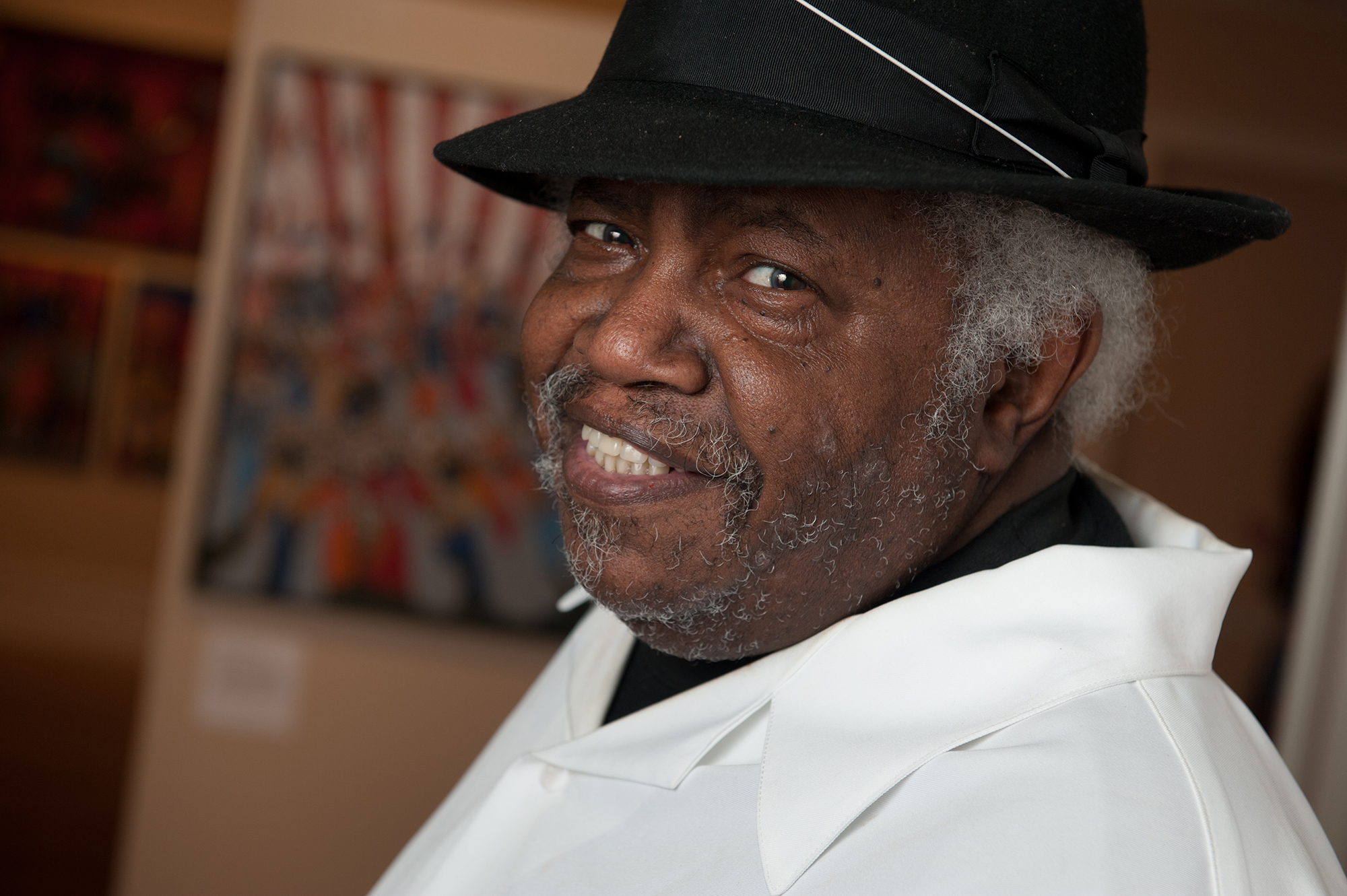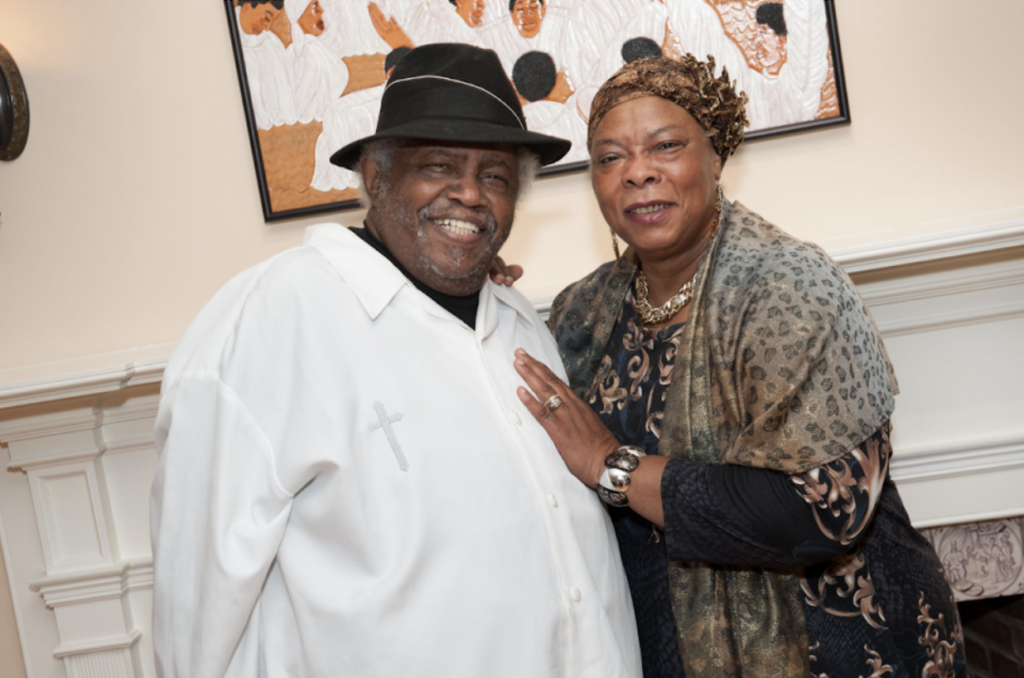‘He was our artist’: Winfred Rembert, acclaimed artist and New Haven resident, dies at 75
New Haven mourns the death of resident and acclaimed artist Winfred Rembert, who expressed the trauma of his upbringing in the segregated South through leatherwork.

Courtesy of Defining Studios
Winfred Rembert, a nationally known Black artist, died two weeks ago in his New Haven home at the age of 75. The long-time Elm City resident touched the hearts of his neighbors, coworkers and friends.
Rembert hailed from rural Georgia, where he worked in cotton fields as a child in the late 1940s. Growing up, Rembert faced many hardships — including surviving a near-lynching and working on a chain gang for seven years. After being released from prison in 1974, Rembert moved north and had eight children with his long-time partner, Patsy. They settled in a home on Newhall Street, and it was there that Rembert, well into middle age, began to draw and paint the horrors he experienced in the segregated South.
Five New Haven community members interviewed by the News remember Rembert for his work — hand-toiled leather and personal folk art — upbeat personality and generous spirit.
“He was our artist, who was very much a part of the community and was very much rooted in his art here,” Babz Rawls-Ivy, board member of the Arts Council of Greater New Haven, said. “He just was New Haven, in a way that people don’t always think about New Haven. … He really has shown people that New Haven is for artists.”
Rawls-Ivy, who also serves as editor of Inner-City Newspaper — the city’s only surviving Black newspaper — said that Rembert was one of the people that her paper covered as a “New Haven treasure” when they were first starting out some 20 years ago.
She told the News that Rembert was “greatness,” describing how he wove his history and upbringing into his art in a way that resonated with the local Black community. His international acclaim inspired local artists as well and helped to broaden the image of New Haven, she said.
Rembert’s first piece was sold by Phil McBlain, who co-owns an antiquarian bookstore in Hamden with his wife Sharon. McBlain’s wife met Rembert and his wife while collaborating on an initiative to build a homeless shelter for local youth, and soon afterward, the two couples became close friends, McBlain told the News.
One Christmas, about 20 years ago, Rembert gifted the McBlains with a leather carving he had created based on a drawing from “Negro Drawings” by 20th-century Mexican artist Miguel Covarrubias. Rembert had first encountered the drawing in McBlain’s bookstore. McBlain told the News that he hung Rembert’s piece in his shop, and a visiting art dealer from the West Coast later purchased it for $300.
Carving figures into leather was a skill Rembert learned while imprisoned in Georgia.
“He always said he wanted to be an artist from the time he was a kid,” McBlain said. “And fortunately, 300 bucks convinced him to take his art seriously, he’s always been telling me he wanted to do art about his life.”
After that first sale, McBlain said, Rembert went on to make more leather carvings, starting with portraits of Martin Luther King Jr. and then moving on to larger carvings based on his own life.
From March 2015 to August 2015, the New Haven Museum hosted a collection of 25 paintings in an exhibit entitled “Winfred Rembert: Amazing Grace.” It also included a 12-minute excerpt from the documentary on his life, “All Me: The Life and Times of Winfred Rembert.”
The exhibit was part of a larger traveling exhibit of the same name organized by the Hudson River Museum in New York. Executive Director of the New Haven Museum Margaret Tockarshewsky said that the Hudson River Museum’s traveling exhibit was significant because it brought Rembert the recognition he deserved.
“He was a gift to New Haven, his work was a gift,” Tockarshewsky told the News. “It was such an honor to have his work here for local residents to appreciate and enjoy.”
She added that Rembert’s work — filled with depictions of the Second Great Migration, the movement of millions of African Americans from the South to the northern United States — reflected the generation he was born in. While the story is highly personal, Tockarshewsky said, it speaks to many families and the idea of “creating new roots.” She called the work both beautiful and true to the brutality inherent to the Black American experience.
Tockarshewsky said that Rembert was the “sort of person that had you at hello.” She described him as captivating and as a man who loved to converse with others.
Dorthula Green, Rembert’s former Beers Street neighbor, expressed similar sentiments.
Rembert lived on Beers Street, in the Dwight neighborhood of New Haven, before moving to Newhallville. Green told the News that she and her sister lived across the street from Rembert’s family during the late 1980s and early ’90s. He was known as a family man, Green said — she would always see him spending time with his wife and kids, and was “touched” by their close relationship.

Green described Rembert as a “gregarious” person who took the time to build close relationships with young people in the neighborhood and encouraged them to stay on the right path.
When Green was a school principal within the state’s Department of Corrections, Rembert volunteered many times to share his story and artwork with young men at prisons in New Haven, Bridgeport and Cheshire.
“He was an amazing storyteller, the way he told his life story and the way that he connected,” Green said. “He wasn’t afraid to look at the thing that potentially could have killed him, you know, time in prison. Going back and … utilizing [his art] to bring a message to people.”
Connecticut State Rep. Pat Dillon told the News that she first met Rembert years ago while she was running for the city’s Board of Alders. She knocked on his door while canvassing. After she mentioned that she had family in Georgia, the two ended up speaking for over half an hour on Rembert’s doorstep.
“He said, ‘I have scars inside and outside from Georgia. I love it, but they tried to kill me,’” Dillon said. “The fact that he could turn that into art is just amazing. … He was just incredibly outgoing, seemed to be very nurturing, especially when you consider that I was just a stranger knocking.”
Jock Reynolds, former director of the Yale University Art Gallery, was also in awe of how Rembert turned his experiences into art. Reynolds described Rembert as “generous and good humored,” a “forgiving kind of person” and “one of the most extraordinary people” he’d ever known.
Reynolds met Rembert in 2000 and soon afterward invited him to give talks at the YUAG. The gallery currently houses Rembert’s triptych “The Lynching, After the Lynching, The Burial.”
He added that Rembert was “really sweet” to University students who came to hear him speak. Reynolds encouraged Yale students to preorder Rembert’s autobiography, “Chasing Me to My Grave: An Artist’s Memoir of the Jim Crow South,” written by Erin I. Kelly. It is scheduled to be released on Aug. 10, 2021.
According to Reynolds, Rembert had suffered from many health complications — including diabetes, kidney failures and a heart condition. He added that Rembert “died peacefully in the arms of his wife, just the way he would’ve wanted.”
Reynolds said the funeral service, which took place last Monday, was a “day of pride, laughter, sorrow and celebration” where hundreds came to honor Rembert’s life and legacy.
Rembert is survived by his wife Patsy, their eight children and many grandchildren.
In 2011, the Mayor of Cuthbert, Georgia, declared Sept. 18 to be “Winfred Rembert Day.”
Sylvan Lebrun | sylvan.lebrun@yale.edu
Zaporah Price | zaporah.price@yale.edu
Clarification, April 16: The story has been updated to remove a reference to Patsy Rembert as Patsy Gammage — Gammage was her maiden name, which she no longer used after marrying Winfred Rembert.







